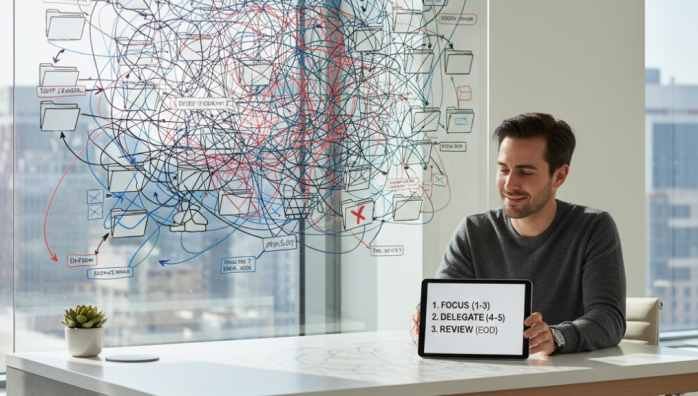Why I Ditched PARA for a Simpler System
by admin in Productivity & Tools 15 - Last Update November 21, 2025

I was a true believer in the PARA method. For years, I preached the gospel of Projects, Areas, Resources, and Archives to anyone who would listen. It felt like the pinnacle of digital organization—a clean, logical system for taming the chaos of my digital life. But over time, I started to notice a creeping sense of dread every time I had to file a new note. I was spending more time organizing than creating, and I knew something had to change.
The promise of PARA and my initial setup
When I first discovered PARA, it felt like a revelation. The idea of separating my digital life into these four distinct buckets was incredibly appealing. I meticulously set up my folders in my note-taking app. \'Projects\' were for my active client work. \'Areas\' were for ongoing responsibilities like health and finances. \'Resources\' became a catch-all for interesting articles and ideas, and \'Archives\' was the digital graveyard for completed items. For a while, it worked beautifully. Everything had a place, and my system looked pristine.
Where the cracks started to show
The problem began with ambiguity. Is a \'plan for a future vacation\' a Project or an Area of life? Is an \'article I might use for a blog post\' a Resource or part of a Project? I found myself hesitating, bogged down by the very system designed to create clarity. The friction was palpable. This cognitive load, the constant micro-decisions, was draining my creative energy. My \'Resources\' folder became a sprawling digital junkyard I rarely visited, and the line between an active \'Project\' and a dormant one became hopelessly blurred.
My “aha” moment: Action over categorization
The turning point came one afternoon when I spent a solid 20 minutes trying to decide where to file a single email. I realized I was optimizing for the wrong thing. I was building a perfect library, but I wasn\'t actually reading the books. My breakthrough was this: my system needed to be built around action and time, not abstract categories.
Introducing my “Now, Next, Later” system
I archived my entire PARA structure and replaced it with something radically simpler. It’s based on urgency and relevance to my immediate goals.
- Now: This folder contains only the projects and tasks I am actively working on this week. It’s small, focused, and non-negotiable.
- Next: This is for things on the immediate horizon. Projects I’ll be starting in the next month or quarter. It’s my queue.
- Later/Someday: A guilt-free brain dump for every half-baked idea, distant dream, or “what if” thought. I review it once a month, but it doesn\'t clutter my daily view.
What about resources and archives? They all go into one giant folder called \'Library\'. With powerful search functions in today\'s apps, I realized I never needed the complex folder structure. I just need to find things when I need them, and a good search with relevant tags is faster than navigating a dozen folders.
Why this works for me (and might for you)
This shift has been transformative. The friction is gone. When I capture a new idea, I no longer agonize over its category; I just ask myself, “When might I act on this?” and place it accordingly. It has forced me to be more honest about my priorities and has dramatically increased my focus on execution. I’m no longer a digital librarian; I\'m a doer. While PARA is a fantastic system for some, I found that for me, radical simplicity was the key to unlocking true productivity.










